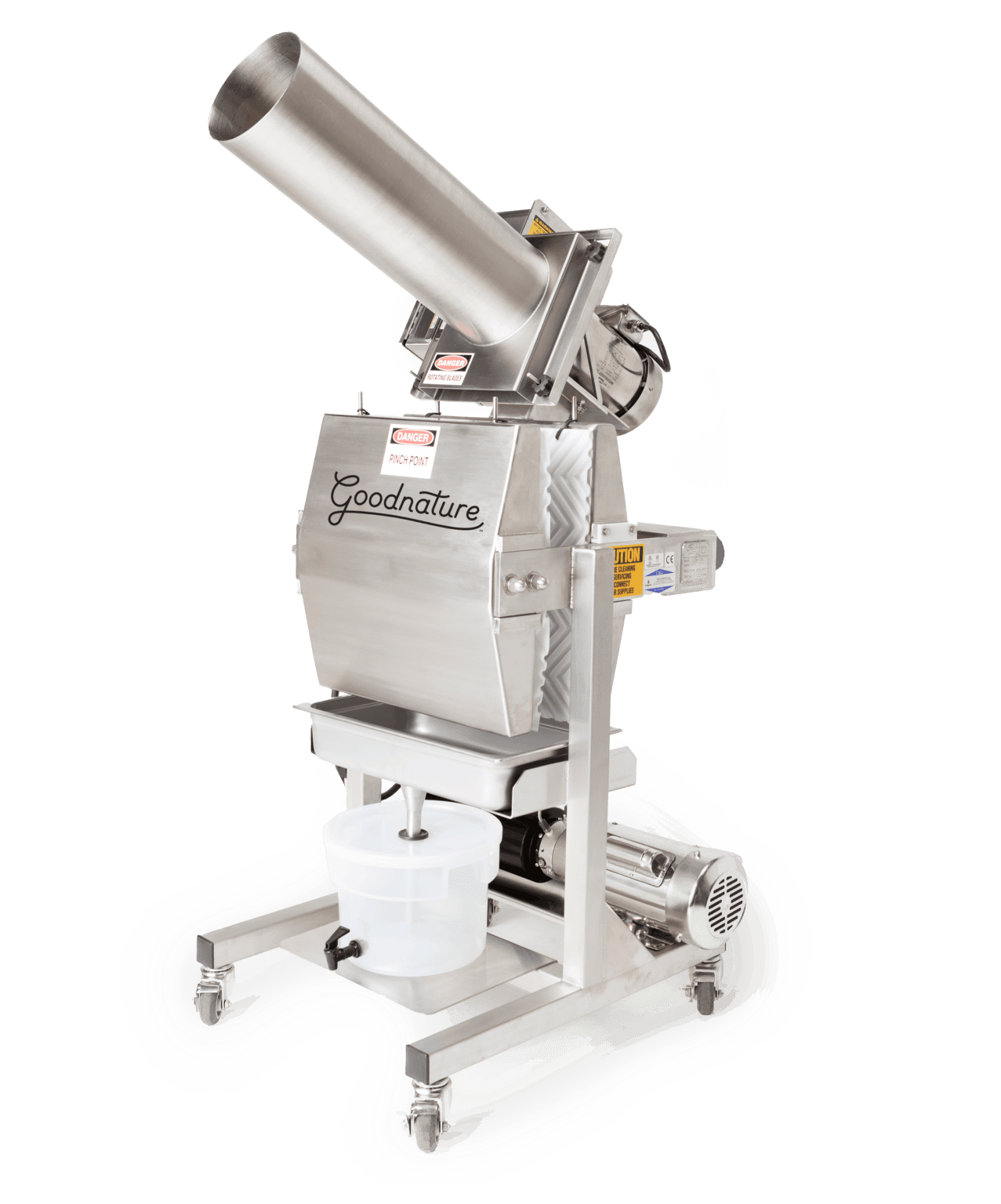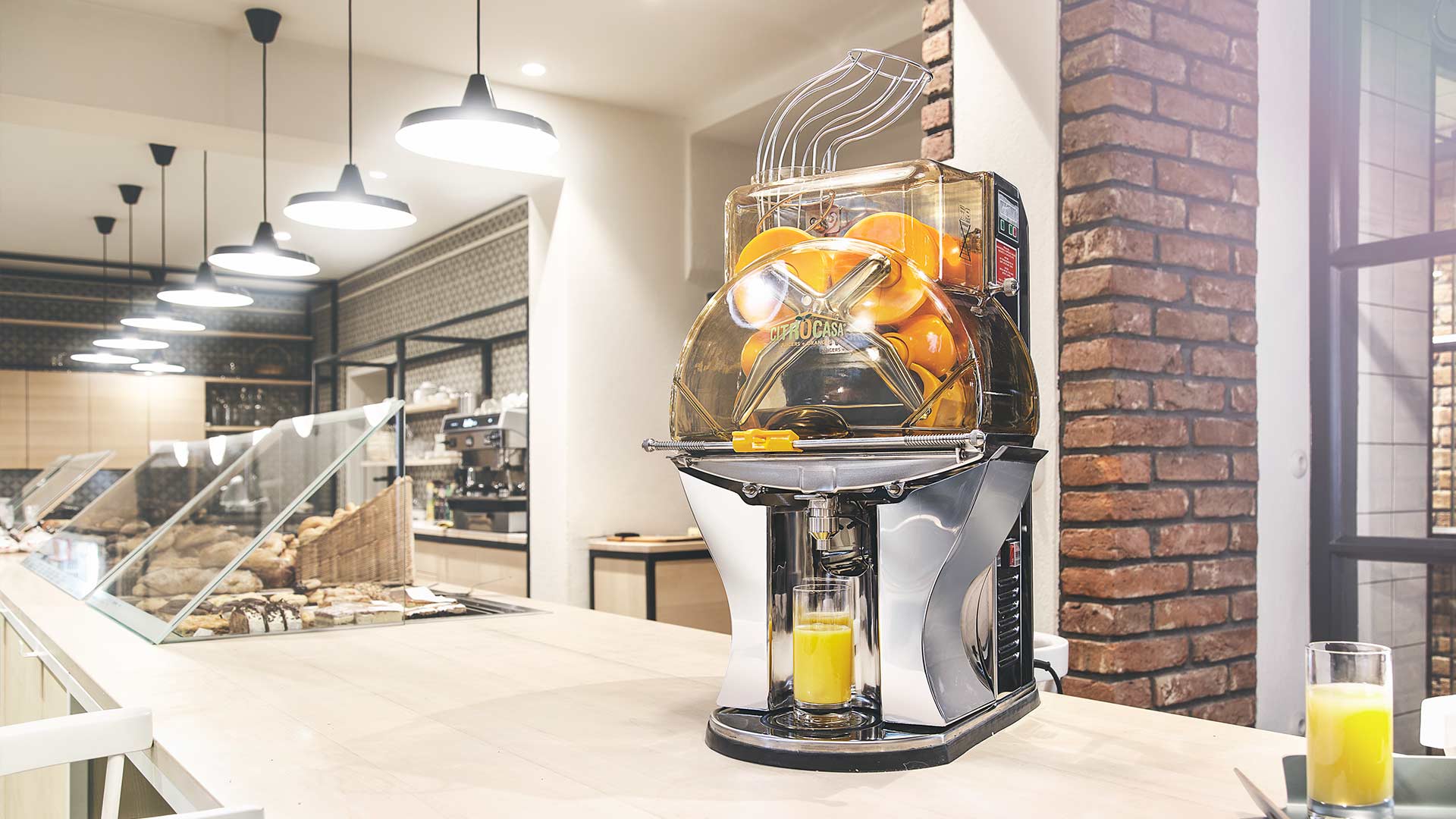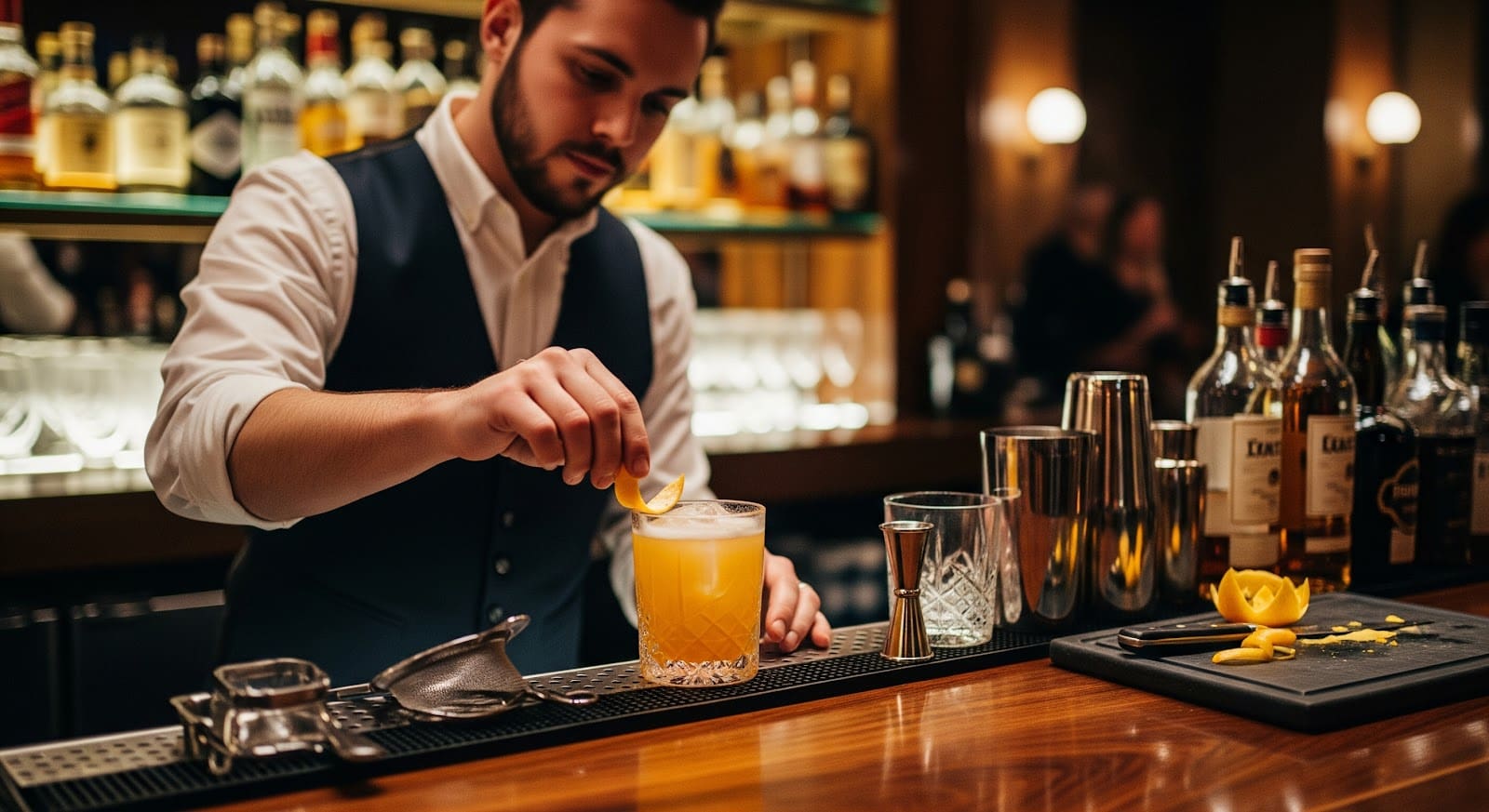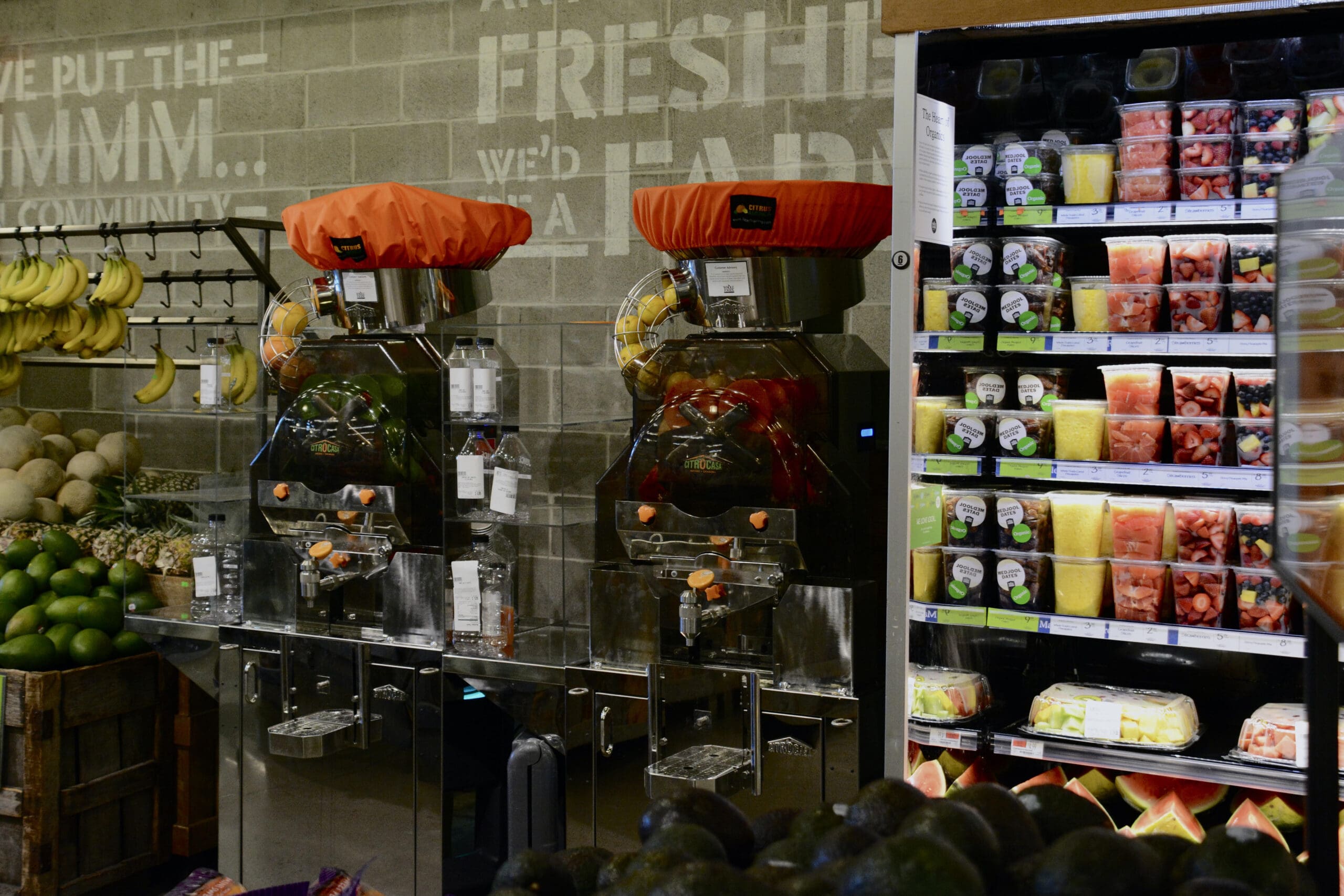Why a Cold-Press Automatic Citrus Juicer is the Best
Cold pressing has become the preferred method of juice extraction from fruit and vegetables. It yields nutrient-dense juice that is fresh, healthy, and easy to consume on the go. But standard cold-press methods don’t work well for citrus fruit. There’s a better solution for oranges, lemons, limes, grapefruit, and tangerines – and it’s ideal for pomegranate juice as well.
WHAT DOES COLD-PRESSED MEAN?
The cold-pressed method is used for making oils and juices. The name derives from the absence of heat in the production process. “Cold-pressed oils or juices are made from fruit, seeds, nuts, or vegetables that have been pressed without using heat, in order to remove the oil or juice from them”, is what the Cambridge Dictionary says.
Why would there be heat when pressing juice? A popular conventional juicing method is centrifugal juicing. Centrifugal juicers have sharp blades that chop and grind the fruit. The blades spin the pulp at very high speeds. Via centrifugal force, the juice is slammed against and pressed through a mesh screen. That’s how the juice is separated from the solids. The high-speed rotations of the spinning blades generate friction and heat. Cold pressing, on the contrary, involves no high-speed spinning. It produces no heat.
One major negative aspect of centrifugal juicing is that the heat and the added exposure to oxygen in the spinning process impact juice quality and taste. Juice from a centrifugal juicer tends to have a shorter shelf life and be foamier, chunkier, and more bitter.
It is generally agreed that, due to the absence of heat and the reduced exposure to oxygen, cold-pressed juice not only tastes better, but also retains more nutrients. This is also mentioned in this article in Current Opinion in Food Science: “The method consists of extracting the juice by crushing the fruits, without adding heat, in order to preserve the enzymes and nutrients as close as possible to their original composition”. Cold-pressed juice is closer to the original whole fruit. Therefore, it’s considered to be healthier than juice produced on a centrifugal juicer.
THE COLD-PRESSING PROCESS
The exact details of the production process may vary depending on the fruit and equipment used, but it usually involves a two-step process. First, the produce is chopped, shredded, or ground up. Then the pulp is placed between two plates and pressed, using the force from hydraulics or other mechanical methods. Thousands of pounds of pressure extract the juice and separate it from the fibrous parts of the fruits and vegetables.
You can read more about the various juicing methods and the price ranges of the different systems in this blog post.
For a juice bar operation, you can use a commercial cold press or a centrifugal juicer to extract juice from many kinds of fresh produce. Some of the most popular fruits and vegetables juiced are carrots, apples, celery, ginger, turmeric, and beets. In addition, you can also use a cold
press to maximize yield from leafy vegetables, such as kale, spinach, and parsley. In all of these cases, you can feed the whole piece of produce into the juicer for processing.
Neither the centrifugal method nor the two-step cold-press process is ideal for citrus fruit. While some juice bars and manufacturers juice citrus on these machines, we don’t recommend it. It’s not efficient, not hygienic, and it doesn’t yield the best taste.


CITRUS JUICE: WHAT ABOUT THE PEEL?
Citrus fruits have a firm peel, and the peel contains oils and other bitter-tasting compounds that are designed to protect the fruit. As a result, citrus juices from a two-step high-pressure cold press will give you a more bitter taste sensation – unless the fruit is peeled first.
Chopping or crushing an entire unpeeled orange or other citrus fruit means that you also chop and crush the peel. While the solid components of the peel will not make its way into the juice, the bitter substances and peel oil released during pressing will. And they will taint the juice’s flavor. That’s why some manufacturers add sugar or other flavors back into the juice, to counter the bitterness.
We have also seen many juice bars peel oranges and other citrus by hand before juicing them in a centrifugal or two-step cold-press juicer. They do this avoid bitter pith or peel oil compromising the taste.
Peeling the fruit before juicing it has a few major disadvantages:
- First, it is extremely labor intensive, especially in a grocery or juice bar environment. Peeling oranges, lemons, or limes requires time and incurs high labor costs.
- Second, it increases the safety risk for employees. Peeling citrus requires your staff to handle sharp knives, possibly under time pressure. Due to the oils and juices released during peeling, your staff’s hands and the fruit get slippery. All of that can easily lead to injuries.
- Third, it is less hygienic. Unless your staff always wears gloves and peels the fruit on a clean surface, the danger of cross-contamination is present.
- And finally, it requires extra workspace beside the juicer: a place where your staff can cut and peel without obstacles in the way, and a place to store the peeled fruit before juicing.
COLD PRESSING CITRUS: IT’S ALL ABOUT THE KNIFE
There is a much better way to make orange and other citrus juices: a fully automated, innovative cold-press method we call “precision-cut cold pressing”. It involves no fast spinning and no heat. It requires no pre-peeling by hand. And yet, it does not chop and crush the peel and contaminate the juice with excessive peel oils.
Maybe you have a little manual citrus press at home, for when you need to squeeze a lemon for cooking or a lime for a cocktail. Most likely, when you use it, you first cut the fruit in half, probably with a sharp serrated-edge knife, before you place it in the press and squeeze it.
Cutting the fruit in half and then squeezing each half of the fruit is the traditional way of juicing citrus – and it’s the best way we know so far. Citrocasa juicers do the same thing, just much faster and much more efficiently. Citrocasa juicers use an innovative serrated-edge knife to make precision cuts that yield the best taste.

The patented Soft Cut System optimizes juice quality and taste along with yield: this supports Healthy Profits.
Click here to find out more about the taste difference of freshly pressed juice.
FULLY AUTOMATED CITRUS JUICING
On a Citrocasa 8000 Series citrus juicer, this is basically how the automated process works:
- The whole unpeeled fruit is transported from the automatic hopper, which holds more than a box of fruit, into the feeder system.
- The serrated knife moves up to make a precise cut and halves the fruit without tearing or crushing the peel. The knife moves back down with impeccable timing – ready for the next precision cut.
- The halves are transported onto the pressing elements.
- The pressing elements apply gentle pressure to each half simultaneously to release the juice.
- The juice is dispensed into a container of your choice: a pitcher, a bottle, a glass, etc.
- Pulp and seeds are kept out of the juice with the help of sieves.
- The sieves continuously transport the pulp and seeds into peel buckets, so nothing gets clogged.
- The peel is discarded into peel buckets.
The result? A sweeter, smoother, and more enjoyable drinking experience. By the way, Citrocasa juicers are not just ideal for citrus, but also for pomegranates. Click on this article to learn more and see how efficiently you can juice pomegranates on our juicers.
EFFICIENCY AND HYGIENE
The process described above may seem long and slow on paper, but in real life it takes only seconds to get a glass of cold-pressed citrus or pomegranate juice.
- The Citrocasa 8000 series juicers press 40 pieces of fruit in 1 minute. Using 100-count Florida juice oranges, you can squeeze an entire box in 2.5 minutes.
- The Citrocasa Fantastic series juicers press 30 fruit per minute, so a 100-count box of Florida juice oranges takes just over 3 minutes.
- The juicers in both series do so continuously without needing a cool-down break, so you can make juice the whole day without overheating the equipment.
Looking at efficiency in terms of juice produced, the Citrocasa 8000 series juicers will give you 0.8 gallons (which is 102.4 ounces) of juice per minute (0.8 gal/min). In portions, that is more than twelve (12) 8-ounce portions of juice in just one minute or 720 portions in a single hour. This juicing method is a highly efficient, fully integrated operation that juices as fast as a soda fountain pours: cutting, squeezing and disposing of the peel but yielding fresh and natural citrus juice.
This juicing method is also extremely hygienic and safe. Your staff does not have to peel or cut the fruit before it goes into the juicer. There is minimal fruit handling, no cutting, no highly repetitive motions, and minimal risk of cross-contamination. You won’t need any extra cutting, peeling, or storage station next to the juicer.
Citrus America has been selling Citrocasa juicers for more than a decade in North America. Citrocasa has the best commercial cold-press citrus-juicing equipment on the market. Contact us to find out more about how we can help you make fresh cold pressed orange juice and other citrus juices to support Healthy Profits.
SUMMARY - Best Citrus Juice
FAQs: Best Way to Make Citrus Juice
What’s the best way to make citrus juice at home or in-store?
Use a dedicated citrus juicer that extracts from halved fruit, minimizing contact with peel and pith. This preserves bright flavor, reduces bitterness, and delivers consistent yield.
Which juicer type gives the best taste?
- Manual press (lever press): Clean flavor, little pith oil, slower throughput.
- Electric reamer: Good for small batches; watch for over-reaming (bitterness).
- Commercial automatic citrus juicer: Fast, high yield, consistent, minimal peel oil—best for cafes/grocery.
How do I prep fruit for better flavor and yield?
- Chill fruit before juicing for brighter taste and food safety.
- Wash and inspect to remove debris; discard damaged or moldy fruit.
- Cut cleanly across the equator to keep segments intact and reduce pith shredding.
How do I avoid bitterness from peel and pith?
- Juice gently; don’t crush the rind.
- Stop extraction once segments are emptied; avoid pulverizing membranes.
- Strain lightly to remove pithy particles without stripping body.
Fresh-squeezed vs bottled—what tastes better?
Fresh-squeezed almost always wins: higher aromatics, lively acidity, and natural sweetness. Bottled is consistent but tends to taste flatter due to pasteurization and storage.
What’s the optimal sweetness–acidity balance?
Target a balanced Brix/acid ratio based on fruit variety and season. As a rule of thumb:
- Valencia oranges: naturally balanced; great baseline.
- Navel oranges: sweeter; add a splash of lemon for lift if needed.
- Grapefruit: consider blending with orange for approachable bittersweetness.
Should I add pulp or strain it out?
- More pulp: Adds body and perceived freshness; can soften acidity.
- Less/no pulp: Cleaner, brighter taste but lighter mouthfeel.
Offer both if you can; preferences vary widely.
What are the best blends for taste and balance?
- Orange + Tangerine: Juicy sweetness and perfume.
- Orange + Grapefruit: Sweet-bitter harmony with big aroma.
- Lemon + Orange: Zesty, bright, and versatile.
- Lime + Grapefruit + Honey: Tart, bittersweet, gently rounded.
Any pro tips for consistent results?
- Juice cold and keep juice cold ≤41°F/5°C.
- Small, frequent batches for peak freshness and aroma.
- Taste every batch; adjust with small blends rather than sugar.
- Label clearly with squeeze date/time; rotate FIFO within 24–48 hours.
What about safety and shelf life?
- Follow HACCP-aligned cleaning for equipment; sanitize food-contact parts daily.
- Store juice refrigerated and sealed; most fresh citrus juices are best within 24–48 hours.
- Use clean bottles and avoid cross-contamination during filling.
How do I scale for a cafe or grocery program?
- Choose a commercial automatic citrus juicer with tool-free cleaning.
- Standardize SKUs, recipes, and batch sizes; set pars by daypart.
- Track yield, waste, and velocity; tweak batch cadence and blends seasonally.
About Citrus America – Citrus America has been driving innovation and quality in the juicing segment for more than a decade in North America and the Caribbean. We’re the exclusive master distributor for Citrocasa and have driven many innovations and quality improvements in juicing equipment. In addition to equipment solutions, we provide tailored training and support strategies to help our customers earn Healthy Profits.
About Citrocasa – Citrocasa has been the pioneer in producing the most innovative and highest quality food grade stainless steel commercial citrus juicing equipment to the grocery, hotel, and restaurant since 2005 across Europe. The Citrocasa 8000 Series was launched in 2005, with the 8000XB and the 8000SB. The 8000SB-ATS was launched in 2013. The Citrocasa Fantastic Series was launched in 2010 with the Fantastic M/AS. The Fantastic F/SB followed in 2011. Between 2015 and today, Citrocasa has launched the Advance upgrades, The Revolution, The Eco, and has added new options for on-line connectivity continuing its role as being the leader in commercial citrus juicing quality and innovation.










An automatic commercial citrus juicer is a the best way to cold press citrus juices. This is the most efficient and hygienic way to juice citrus and do so with the best tasting juice possible.